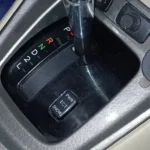HPFPs (high-pressure fuel pumps) are still a problem for some users, even though the 6.7L Powerstroke is more reliable, durable, efficient, and economical than previous Powerstroke engines. This part is vital to keep your engine running and pump fuel to the injectors.
Table of Contents
Understanding the 6.7 powerstroke high pressure fuel pump failure symptoms is crucial before it is too late. Loud sounds, engine sputtering when accelerating, low fuel pressure, difficulty starting, reduced power, and fuel efficiency are all symptoms of 6.7L Powerstroke fuel pump failure.
We’ll dive into these symptoms to determine their causes and how they can be fixed.
6.7L Powerstroke Diesel High-Pressure Fuel Pump Failure Symptoms
It’s hard to pinpoint the exact location of the problem, as the symptoms are similar to other engine problems. Sure, signs indicate you should check the HPFP and other parts. Some of these include:
Loud Noises and Squeaks
It is the most obvious sign of a high-pressure pump failing. If the HPFP is not performing optimally, it cannot provide enough fuel to lubricate the engine’s internal parts.
These moving parts will make loud noises to alert you that something is wrong. Your car will make many different noises while you drive. The high-pitched sounds and squeaks from a failing HPFP can be easily distinguished from other normal sounds.
Noise can be more annoying when driving on high roads or increasing the speed of your car. If you hear any unusual noises, take your vehicle to a professional.
Sputtering or Jerking engine
A faulty HPFP can also cause the engine to jerk or sputter at high speeds. The engine can start in many ways, but this pattern is familiar.
The jerking and sputtering usually start when the vehicle accelerates, continues for a certain period (1 to 5 miles), and then suddenly stops. The fuel pump cannot maintain the pressure necessary for smooth operation.The up-and-down pressure indicates fuel pump failure.
Difficulty during acceleration
If you want to accelerate quickly, your car will need more fuel. A faulty HPFP will need to provide more fuel for the engine to perform its job. The vehicle may take a long time to accelerate, or even not at all.
Check the fuel pump as soon as you can if your car has trouble accelerating.
Loss of power
Normal circumstances should see your fuel pump perform the same whether you are under high or low stress, such as carrying extra weight or driving up steep roads or hills. A damaged fuel pump will not perform as well.
The fuel pump can no longer provide the same amount of resistance it once did. Your car will lose power and slow down under stress. In extreme situations, your vehicle may lose up to 50% of its average power output.
Bad Fuel Pressure
Fuel pressure will be affected if your fuel pump fails. This is because the fuel pump pushes fuel into the engine rails. Your vehicle’s throttle will not respond as it should, it will not start quickly, and the Check Engine light will come on.
Check your owner’s guide to determine if you have enough fuel pressure.
Filters can cause problems.
Are your car filters malfunctioning? This could be an indication of a failing fuel pump. The filters can be replaced infrequently, even though you should replace them regularly.
You should take your vehicle to a mechanic for a thorough HPFP check if the filters don’t work properly after replacing them regularly.
Fuel efficiency is reduced.
You know precisely how much fuel you need for your vehicle. The high-pressure pump may need to be adequately worked if it uses more fuel for the same distance.
Fuel pumps have a relief valve that controls mileage in a certain way. The valve will stop opening when the fuel pump becomes damaged. This allows much fuel to enter the engine with no resistance.
When your fuel pump is not working, you must use more fuel.
What causes high-pressure fuel pump failure?
Fuel pumps can fail for various reasons, including normal wear and tear. Some of the most common reasons for fuel pump failure are lack of maintenance, especially oil changes. Here are some of the most common reasons for HPFPs to malfunction.
Lack of maintenance
It may sound cliche, but most problems with your car are due to a lack of maintenance. The camshaft and parts of the fuel pumps are constantly working to keep your vehicle’s fuel system active. Due to wear and tear, the fuel pump can’t maintain the pressure it needs. The materials used in the fuel system are of high quality. If you do not keep them regularly, they will stop working and lose efficiency.
Fuel Pump Leaks
Leaks in the fuel injectors and fuel pumps are common because the fuel pumps remain under constant pressure. A certain resting pressure must be maintained in most cars even when the engine’s not running.
Fuel pumps will leak if the pressure is too high. The situation gets worse when the carbon residue builds up. A scan tool can be used to detect a fuel leak.
Oil Contamination
One of the main reasons high-pressure fuel pump failures occur is the use of contaminated or the wrong type of oil. Most modern vehicles are equipped with specific oil recommendations from the manufacturer.
If you use oil of a low quality that is not recommended, certain parts of your fuel system will need more lubrication. This will lead to increased friction, heat damage, and wear.
Oil can also be contaminated easily by dirt, debris, and moisture. The system needs to be adequately lubricated by dirty oil. All these factors can lead to fuel pumps failing.
Sensors that fail
Even though faulty sensors do not directly affect the fuel pump, they can still indirectly impact it by sending incorrect signals to your vehicle’s powertrain control module. Power and temperature sensors are essential for a successful combustion.
The system may be set to low pressure if the sensors give the wrong readings. This low pressure can cause the fuel system to malfunction.
Solenoids Failure
The solenoid controls both the volume and pressure of high-pressure pumps. The solenoid can be damaged, and the pressure in the pump will drop. This will stop the fuel pump from performing according to the vehicle’s needs.
Solutions to Prevent CP4 Fault in 6.7 Powerstroke engines
Installing a CP4 upgraded fuel pump that has stronger internals is one solution. This will prevent the pump from breaking down due to excessive wear.
- Upgrade CP4 fuel pump
Installing a lift-pump to increase fuel pressure and flow is another solution. This will reduce the load on the CP4 and help it to last longer.
- Install lift pump
It is important to perform regular maintenance in order to avoid CP4 failure. It is important to change the fuel filter every 10,000 miles, and use diesel fuel of high quality with a cetane number at least 50.
- Regular Maintenance
Fuel additives can help to prevent CP4 failure, by lubricating and reducing wear on the pump. To keep your fuel system clean, look for additives containing lubricants or detergents.
- Use fuel additive
Avoiding excessive idling or heavy loads will reduce the load on the CP4 and help prevent premature failure. It can also reduce emissions and improve fuel efficiency.
- Avoid excessive idling when you are carrying heavy loads
Repairing CP4 failure in 6.7 Powerstroke engines: Cost and process
Repairing CP4 failures in 6.7 Powerstroke engines is time-consuming and costly. What you should know is:
- Repairing CP4 failures can cost between $3,000 and $10,000.
- This involves removing and replacing the CP4 fuel pump.
- To prevent further engine damage, it’s vital to fix the problem immediately.
Some of the signs of CP4 failure are engine misfires and loss of power.
- To prevent CP4 failure, it is recommended that the fuel system be inspected on a regular basis.
- Upgrade to a CP3 Pump can be a good preventative measure.
- Using high quality fuel and additives will also help to prevent CP4 failure.
Repairing CP4 failures in 6.7 Powerstroke engine is a complicated and expensive process. Preventative measures are important to avoid this problem.
How can you test a high-pressure fuel pump?
6.7L Powerstroke High-Pressure Fuel Pump Replacement
What should you do if your 6.7L Powerstroke fuel pump is no longer working? It is best to replace the pump. The fuel pump is the best option. We also recommend replacing the related parts, such as fuel injectors, fuel lines, and filters. However, this will cost a lot of money.
Before you do anything else, use a scanner tool to ensure the problem is in the HPFP. If you are sure the problem is in the HPFP, take your vehicle to an expert to replace the pump.
We don’t recommend you do it at home because the process is complicated and takes a long time. You could end up damaging internal parts. Here is a brief description of the mechanic’s fuel pump replacement procedure.
- He will then release the pressure and wait until the motor is completely cooled. An access panel is above the fuel tank in your passenger compartment. The mechanic will use the panel to reach the fuel tank.
- He will then remove the EVAP system hoses, the return and supply hoses, and the fuel pump. The fuel pump can now be removed.
- After removing the old one, the mechanic will then attach the mounting brackets and the new pump to the correct place.
- He will then replace the external in-line filter, if any. The electrical connections will be reconnected, along with the removed hoses. Your car should now have a new high-pressure pump.
6.7L Powerstroke High-Pressure Fuel Pump Replacement Cost
The cost of your car will vary depending on the model, year, and age it was manufactured. The cost can range from as low as $220 to as high as $1062. You must pay between $95 and $854 for the parts and between $124 and $260 for the labor.
How Often Do You Need To Inspect And Service A High-Pressure Gas Pump?
Most industry experts recommend cleaning your fuel system at least once a year to avoid performance issues. Check the owner’s guide for any manufacturer’s suggestions.
It would help if you did it every 60,000 kilometers or whenever you notice performance problems. Cleaning the fuel system is not recommended as a preventative measure; it is only recommended when problems occur.
FAQ’s
How long can a high-pressure fuel pump be expected to last?
The fuel pump should last for at least 100,000 miles.
Can you clean a high-pressure fuel pump?
Yes, you can. A fuel system cleaner can remove sediment accumulation if your car has an electric fuel pump. You can clean the internal filter of a manual fuel pump (commonly found in older cars) by opening it. Note: Cleaning the entire fuel system is only recommended if you have expert advice.
Final Words
Here are the causes of the 6.7L powerstroke high-pressure pump failure and solutions. Fuel pump failure is likely to cause unpleasant noises, engine jerking or power loss, and low fuel pressure. Refrain from making any mistakes; consult an expert as soon as possible. If you wait, the problem will worsen and cost more to fix.
Related topic: best and worst years for 6.7










